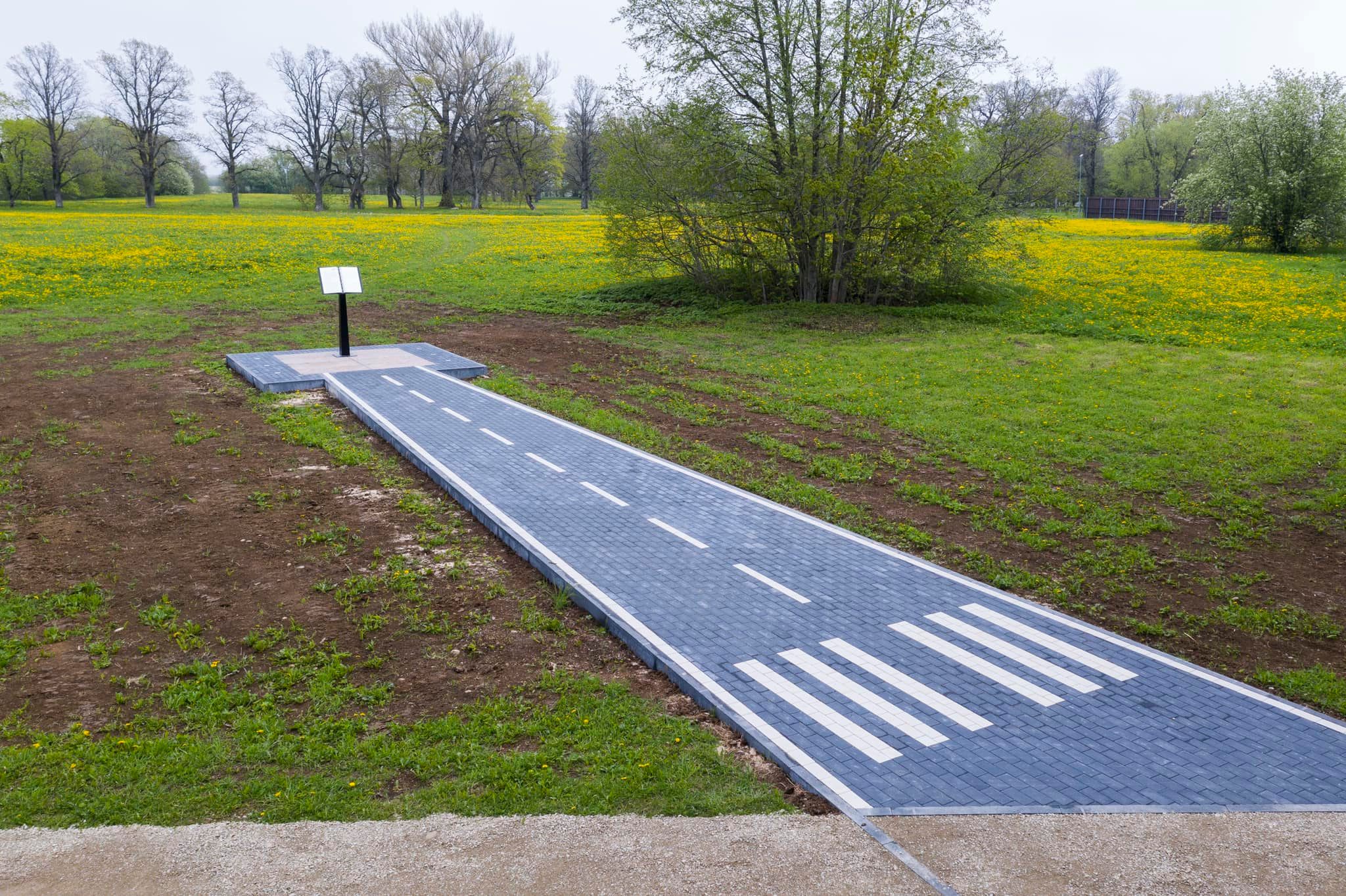New memorial in Estonia marks young
German pilot’s flight to Kremlin
In 1987, a West German teenager shocked the world by flying hundreds of kilometres across Soviet airspace to land a Cessna airplane in Red Square. The stunt by Mathias Rust is one of the most talked-about aviation feats in history – and has now also been commemorated in Estonia.
35years after German teenager Mathias Rust made history by landing a sports plane on Red Square in Moscow, Estonia paid a tribute to the spectacular event on 28 May 1987 and commemorated it with a new monument. A memorial was unveiled in the park of the Saka Manor house in Ida-Viru County that consists of a 24-meter long black concrete runway ending with a symbolic Red Square made up of red granite. On it, a commemorative plaque depicted as an iron book outlines in four different languages the historic solo flight that caused a stir and made international
headlines – and somehow helped to change the world.
During the Cold War, the then 19-year-old Rust managed to cross the borders of the Soviet Union unhindered and
successfully steered his hired single-engine light aircraft through about 700 kilometres of Soviet airspace without
drawing the bigger attention of the military authorities. Slipping past radars and the missile defence shield,
the amateur aviator from the former West Germany made it to the very heart of the Soviet Empire – and ultimately landed his tiny white Cessna 172P plane at the gates of the Kremlin. What a spectacular stunt!
Incredible incident
Rust’s bold endeavour was an embarrassment and immense humiliation for the Soviet Union and its military which was then considered to have one of the most powerful air defence systems in the world – highly protected and seemingly insurmountable. Orders were very clear at that time: no Western plane was to be permitted to fly unimpeded into Soviet airspace – and must be stopped at any cost and by force, if necessary. In other words: to be shot down. This happened less than five years earlier to a South
Korean civilian airliner after straying into Soviet airspace, causing the death of all 269 passengers on board.
But a combination of unbelievable luck, human error and command-and-control miscoordination in the military
resulted in Rust’s plane being mistaken for a friendly aircraft and it was allowed to continue flying all the way to
Moscow. At 6:43 p.m. – almost five and a half hours after he had left Helsinki – the young German pilot touched
down on a four-lane bridge next to St Basil’s Cathedral, in close distance to the Lenin Mausoleum. Before the
KGB showed up and he was arrested, Rust spent more than an hour among a crowd of curious onlookers on the
ground and talked to people who came to see him. Soviet leader Mikhail Gorbachev quickly seized the
opportunity and used the resulting fallout to sack his defence minister and other military hard-liners opposed
to his root-and-branch reform of the Soviet system – an important step towards the fall of communism. “The flight
through the Iron Curtain gave additional impetus to the collapse of the Soviet Union and the re-independence of
Estonia”, said Saka Manor owner Tõnis Kaasik at the opening of the monument just ahead of the 35th anniversary of the flight. “On our own behalf, we wanted to commemorate this historic event, which is also directly related to the history of Saka. It was here in the Saka area where Rust entered Soviet airspace and, reaching above Kohtla-Järve, continued his flight along the path of the railway line to Moscow.”
Why, who, where?
During his flight, Rust flew across the Baltic Sea and into Soviet air space near the sea tower of the manor house, which is located at a noted beauty spot directly on Estonia’s northern coast. Back then, it was an observation post of the Soviet border guard which the young pilot crossed over in the sky in his Cessna.

Join the newsletter
